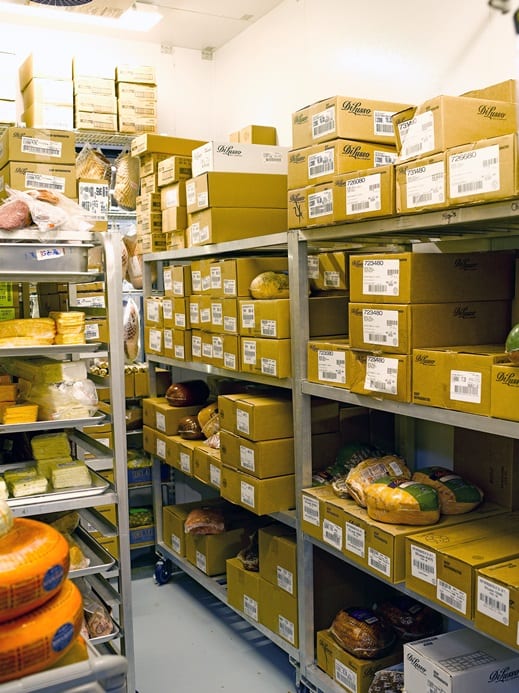5 Ways to Maximize Your Walk-In Efficiency

- May 1, 2018
Maybe you recently bought a new walk-in cooler or freezer. Maybe yours has been going strong for the last decade or so. Knowing your options for making it more efficient — in both function and usability — can apply no matter the age of your walk-in. Here are five ways to get the most out of your walk-in investment.
1. Make good use of the space
Shelving is an important decision in your walk-in. Use product that has been approved by the National Sanitation Foundation (NSF). Don’t over fill your shelving, but product positioning helps maximize the space in your walk-in cooler or freezer. There are a few considerations you should make, however, when installing shelving. First, make sure the bottom shelf is at least six inches off the floor to make cleaning your walk-in easier. Second, ensure there’s enough space around the stored products. You want the refrigerated air to circulate around the items in the walk-in. Finally, don’t block the evaporator fans — to keep your cooler or freezer running properly, these fans need to be unobstructed both on discharge and intake sides.
2. Perform regular maintenance
With how frequently your walk-in is used, a best practice is to have a trained technician check in quarterly to make sure all the systems are working properly. Also, be on the lookout for air infiltration that could result in a frost buildup.
3. Add traction to floors
Slick floors in any setting are a disruption to employee efficiency. Slick floors in an environment prone to grease or food debris can be even more dangerous. Adding traction to the floors in your walk-in can help alleviate fall concerns. We recommend choosing a walk-in that has an antimicrobial, textured floor to increase efficiency. Our Sanisteel® antimicrobial floor has a dimpled surface to prevent slips — and the added bonus of being easy to clean.
4. Refurbish your equipment
Walk-in doors receive the most use and are typically the first to need maintenance. Fortunately, replacing the door is a simple process that can help increase the energy efficiency in your cooler or freezer instantly. If your walk-in is older but gently used, you should certainly check into walk-in refurbishment options as another way to save some operating costs.
5. Consider energy savings
As technology increases, so do energy-efficient options for walk-in coolers and freezers. Motors on evaporators are more efficient than they were three or four years ago. LED lighting has been incorporated into walk-ins, significantly reducing the electrical footprint. Electronic controls allow for temperature swings of only two degrees to eliminate frosting and freezer burn. There are also other energy-efficient options available you can incorporate into your walk-in, such as strip/air curtains or high-speed rollup fabric doors.
Interested in learning more about walk-in efficiency or in pursuing one of these options? Contact our construction services support team for a personal consultation into how we can help your walk-in work better for you.










